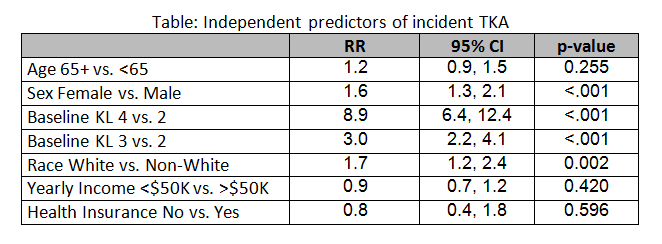Session Information
Session Type: Abstract Submissions (ACR)
Disclosure:
J. E. Collins,
None;
B. Deshpande,
None;
J. N. Katz,
None;
E. Losina,
None.
« Back to 2014 ACR/ARHP Annual Meeting
ACR Meeting Abstracts - https://acrabstracts.org/abstract/race-and-sex-specific-incidence-rates-and-predictors-of-total-knee-arthroplasty-data-from-the-osteoarthritis-initiative-7-years-follow-up/

